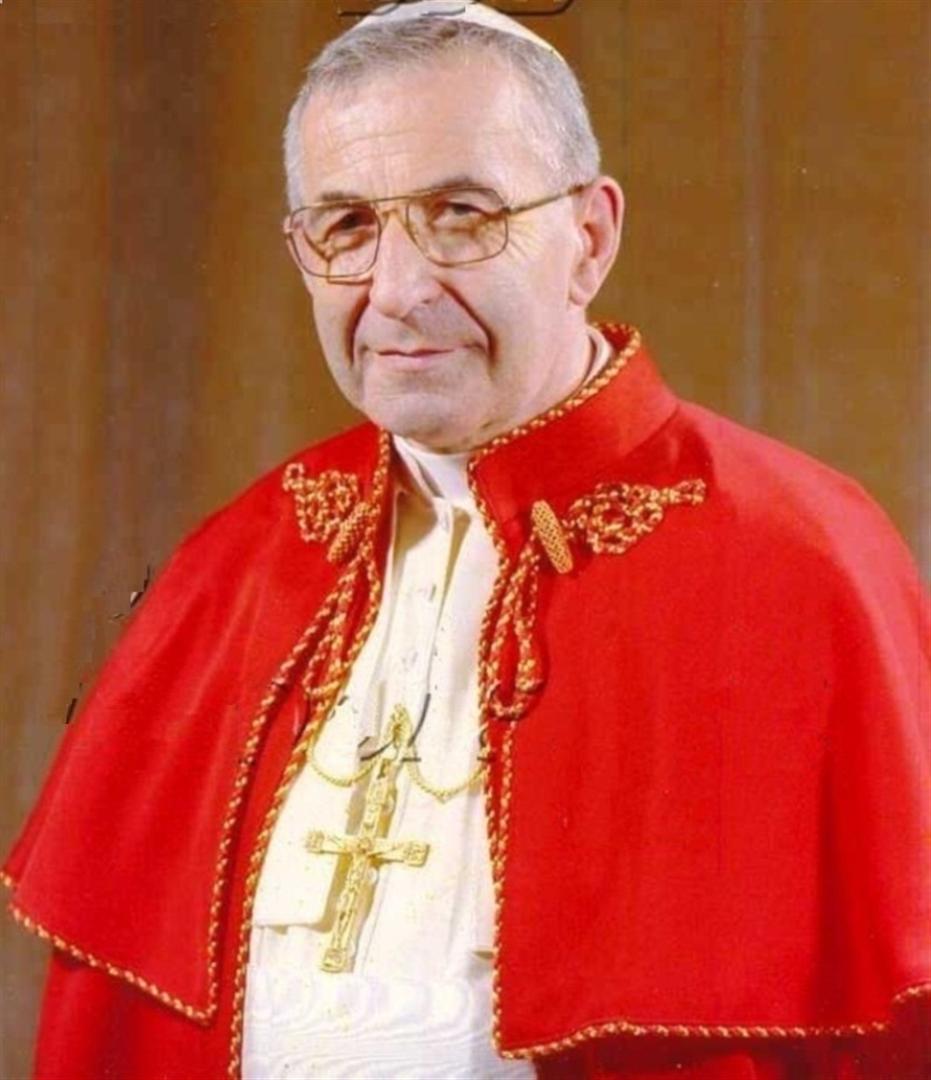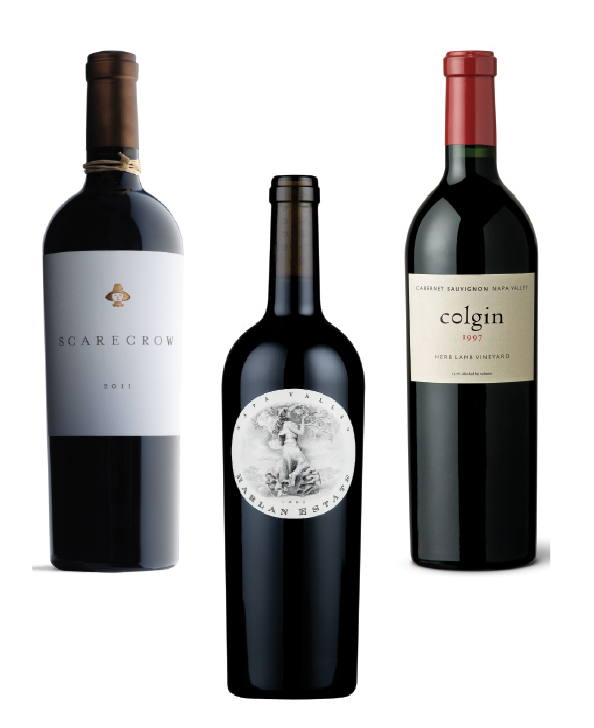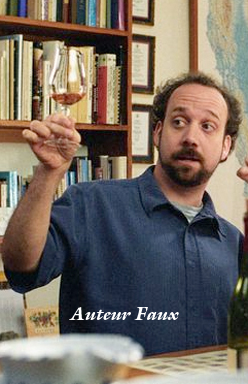It’s far too infrequent that Your West Coast Oenophile gets to celebrate a milestone in the prolonged development of Sostevinobile, but I suppose it will portend of good things finally coalescing in 2015 if I start off this year’s chronicle by noting that, at long last, I have managed to optimize our winery database and bring it current, cataloging a backlog of 400-500 business cards I had allowed to accrue over the course of 2014. Granted, not exactly earth-shattering news, but still a highly significant hurdle, with widespread ramifications for the Sostevinobile wine program as I dabble with alternative sources for funding (more on that in another post).
Much of what I wrote last year bemoaned the apparent decline in the major trade tastings, both in terms of public attendance and winery participation. Over the past two decades, these events have proven a cornerstone in my developing a comprehensive perspective on the West Coast wine industry and in enabling Sostevinobile to meet and vet some 3,600+ wine producers since our inception.
But I have never relied exclusively on these events to research the exhaustive program for sustainably-grown West Coast wines we are undertaking. Often, I resort to happenstance or other random means to discover unheralded wineries that limit their distribution to a discrete clientele or simply shy from publicity. No matter where I journey, I always make a point to avoid scheduling meetings or tastings for the latter part of the afternoon and allow myself to get lost along the back roads of the particular AVA I happen to be investigating. Invariably, I will stumble upon a ramshackle barn with a dirt driveway beside a barely perceptible welcome sign or ID placard, a harbinger of unpretentious yet dedicated craftsmen—vignerons, in the true sense of the word.
Last fall, I made several treks to southern Napa and the Carneros region to see how I might help out numerous friends whose wine operations were severely impacted by the Napa earthquake. On one such visit, en route to Bouchaine and Adastra, I quite unexpectedly came upon the unadorned rustic tract where McKenzie-Mueller Vineyards & Winery crafts its select varietals. The rundown, dusty barn that houses their wine operations and ersatz tasting room seemed anachronistic, a throwback to an era before ornate $50 tastings became the vogue in Napa, but the simplicity of the setting belied a fastidious endeavor whose forte lies with their bottling of the other four Bordelaise reds, a rarity here on the West Coast, along with an unwavering commitment to a straightforward vinification, unmasked by filtration or other manipulations.
Most impressive among their offerings were the 2006 Malbec Los Carneros and the 2009 Petit Verdot, both splendid renditions of these less storied varietals. The more familiar 2007 Estate Bottled Cabernet Franc Napa Valley and the 2009 Merlot Los Carneros proved nearly as striking, while their 2008 Estate Bottled Cabernet Sauvignon reflected the adequacy of this off year vintage.Alas, McKenzie-Mueller’s proprietary blend, the 2005 Tartan was not available this particular afternoon, and so I will be compelled to visit again!
On a different tour of the earthquake’s scope, I walked through downtown Napa to survey the undocumented damage and visit with the dozen or so wineries that have set up tasting rooms there. Stopping by Gustavo Wine, the downtown nexus for what had been known as Gustavo Thrace and other wines produced by the legendary Gustavo Brambila. Not to make short shrift of these selections, worthy successors all to his role in Château Montelena’s historic showing at the Judgment of Paris, but my intrigue lay in discovering the wines from Avinodos, a nascent undertaking by his son Lorin Brambila and Tasting Room Manager Dan Dexter. Starting off modestly, this label nevertheless made an auspicious debut with both their 2012 Sauvignon Blanc and a full-bodied 2012 Malbec—yet another encouraging indicator of California wineries’ determination not to accede to perceptions of Argentina’s inextricable domination of this varietal.
My meanderings in Dry Creek yielded similar serendipity. On a hot afternoon last fall, I unexpectedly came upon the Geyserville home of Cast, as I headed up Dry Creek Road in search of the beachhead at Lake Sonoma. This brand new, state-of-the-art winery culminates the aspirations of two community bankers from Texas, and though the ambience may seem a bit Southwestern, the wine is decidedly Californian. The early lineup includes a NV Blanc de Noirs, a Pinot-based sparking wine, a tepid 2013 Sauvignon Blanc, the vineyard-specific (Marimar Estate’s Don Miguel Vineyard) 2012 Pinot Noir, and the 2011 Grey Palm Estate Zinfandel. The forte for winemaker Mikael Gulyash proved, however to be the exquisite 2012 Old Vine Zinfandel Watson Vineyard and—atypical for Dry Creek— the 2012 Grey Palm Estate Petite Sirah.
| Meanwhile, on the other side of the AVA, I discovered the striking, sustainably-designed tasting room for Uptick Vineyards. Perched above their Westside Road vineyards, I enjoyed a striking NV Sparkling Brut, a wine designed to bias me toward white selections. The 2012 Dry Creek Valley Sauvignon Blanc proved amiable enough, but the hot afternoon only accentuated the 2012 Hilda’s Rosé, a deft marriage of Pinot Noir and Syrah. |
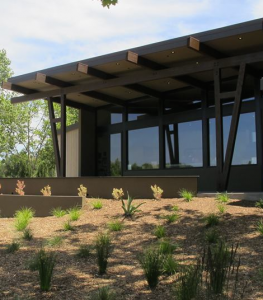 |
Because of the sweltering conditions, I eschewed Uptick’s selection of Russian River Valley Pinot Noir and Syrah, as well as their Old Vine Zinfandel, in favor of two delightful—and chilled— white selections: the 2009 Chalk Hill Chardonnay and the contrasting yet equally impressive 2011 Russian River Valley Chardonnay. There will be other occasions to revisit and sample these other selections, perhaps on my next Dry Creek stumble.
As much as I have lamented, over the past year in particular, the paucity of new labels for Sostevinobile to source at the major wine tastings—partly because I have repeatedly attended these events, partly because of the decline in winery participation—I nonetheless manage, on occasion, to encounter a plethora of discoveries.
Such fortuity seems to be the rule at the various Garagiste Festivals held throughout the state. Most recently, the Paso Robles session offered nearly 40 (!) wineries and labels to add to the Sostevinobile roster, a veritable cornucopia of nascent producers bottling under 1,000 cases annually. Exemplifying this profile, John & Lisa Shaw craft a scant 300 cases under their Alma Sol label. Their 2009 Estate Cabernet Sauvignon offered a competent wine, while their 2011 Meritage blend of Cabernet Sauvignon and Merlot proved preferable, even for such a challenging vintage. But, true to Paso’s unfettered œnology, the standout was the 2013 Sagrado, a proprietary blend of Syrah, Viognier, and Cabernet Sauvignon.
An implicit acknowledgment of this open spirit is evidenced in the nomenclature for Artisan Uprising. Brothers William & David Vondrasek produce a mere 275 cases annually, exemplified by their appealing 2012 Merlot, alongside its Bordelaise counterpart, the 2012 Malbec. By contrast, Barton Family’s 900 cases annually seems gargantuan (this volume partly explains their need to bottle under three distinct labels: Barton, Grey Wolf, and Occasional Wines). Here, under their eponymous line, the superb 2011 E-Street artfully blended 80% Tempranillo with 20% Mourvèdre (or Monastrell, its Spanish name).
Mourvèdre underpinned three sublime interpretations of traditional Rhône bottlings from Copia Vineyards, starting with 2013 The Answer, a marriage of 75% Syrah, 23% Grenache, and 2% Mourvèdre. Their previous project, 2012 The Cure predominantly featured Syrah, while their standout, the understated 2012 The Blend married 40% Syrah with equal parts Grenache and Mourvèdre. Dramatically, David DuBois’ Cholame Vineyard showcased the Mourvèdre-dominant 2011 Cross Country, a mélange rounded out with 35% Grenache and 5% Petite Sirah; this Rhône-style variant was nicely juxtaposed against the 2012 Summer Stock, an estate grown Grenache Blanc.
Rising above the strictures of the French AOC, Ascension Cellars forged together a line consisting of both Rhône and Bordelaise-style wines, showing deft touches with both their 2011 Ascendance, a proprietary blend of Cabernet Sauvignon and Merlot and the 2012 Evangelist, an exceptional dessert-style (6.8% residual sugar) Viognier. Even more disparate, Château Lettau’s 1,100 case production not only spanned both Bordeaux and the Rhône, but offered an interpretation of Iberian varietals that proved their forte: a striking 2012 Stiletto Tempranillo, accompanied by the 2013 Albariño Kristy Vineyard. A winery that truly epitomizes the frontier spirit that demarcates Paso Robles, Deodoro Cellars dazzled with its unconventional blends, starting with a dazzling white trilogy of Sauvignon Blanc, Malvasia Bianca, and Viognier, the 2013 Euphoria. On the red side, the 2012 Pantheon married Zinfandel with Grenache and Syrah, a deft combination that almost made the straightforward 2012 Cabernet Sauvignon seem mundane. And lest I forget—the 2012 Nepenthe, tempering a Cabernet Sauvignon/Cabernet Franc pas de deux with Petite Sirah.
Conventional or not, blends did seem to dominate among these craft vintners. One of my most impressive discoveries of the afternoon, Deno Wines, offered their imaginative 2010 2 Bills Estate Blend (66% Zinfandel, 34% Grenache) alongside a three-year vertical of their proscribed Rhône blend (60% Grenache, 30% Syrah, 10% Mourvèdre), the most striking of which was the middle selection, the 2009 Estate GSM. Proudly proclaiming its contrarian approach, Dilecta Wines poured what might be called an MSG, the 2012 Unorthodox, a blend of 42% Mourvèdre, 42% Syrah and but 16% Grenache. Less bold but as flavorful: their 65% Grenache/35% Syrah blend called the 2012 The Tiller.
The orthodox tenets of Catholicism under which I was inculcated as an impressionable youth attending St. Peter of Alcantara Church would not have countenanced the incorporation of an Indian elephant, particularly with its allusions to the Hindu god Ganesh, into its catechism; this unusual hybrid, however, distinguishes Guyomar Winery in Templeton, whose estate, coincidentally, is known as St. Peter of Alcantara Vineyard. Blue Nun this is not, but it pervasive religious nomenclature includes the 2010 Monsignor, a Petite Sirah-dominant blend with 24% Zinfandel, 16% Syrah, and 4% Grenache. On the other side of the pulpit, the 2010 Laity offered 64% Syrah, 16% Grenache, 14% Petite Sirah, and 6% Zinfandel, while the intermediary 2010 Oblate focused on the Zin, with 19% Petite Sirah, 9% Grenache and 5% Syrah to round it out. A relative gargantuan at this tasting, with 1250 case production, Falcone Family Vineyards loomed large with their 2012 Estate Syrah and a striking 2011 Estate Cabernet Sauvignon Mia’s Vineyard, but overshadowed even these exceptional vintages with their NV Annaté V Estate Blend, an ongoing solera culled (so far) from the 2001, 2012 and 2013 bottlings of their proprietary Syrah/Petite Sirah/Cabernet Sauvignon blend.
Another classical Indian allusion, drawn from the apocryphal 65th position in Vātsyāyana’s Kama Sutra, LXV Wines strives to evoke a deep sensuality with its labels, as well as their wines, like their Cabernet Franc/Syrah/Merlot, the 2012 Secret Craving. and the seductive 2012 Rising Tempo, a deft blend of Grenache, Tempranillo, and Syrah. The double-entendre of its nomenclature—MCV (not to be confused with MC5) —derives from winemaker Matt Villard’s initials and well as to a different Roman numeral, to which he paid homage with he 2011 1105, a Petite Sirah softened with Syrah and Grenache and its more elegant successor, the 2012 1105, a true blend, with 66% Petite Sirah, 24% Syrah, 9% Grenache and a 1% splash of Viognier. However, MCV really kicked out the jams in Petite Sirah with their 2013 Pink, a rosé expression of Petite Sirah, Syrah, Grenache and Tannat, alongside their 2012 Petite Sirah Rosewynn Vineyard, a stunning expression of the varietal unadorned.
I always appreciate a good pun—especially a bilingual one. Ryan Pease’s Paix Sur Terre is a 400 case specialist in Mourvèdre, though when I arrived, they only had left their Syrah/Mourvèdre blend, the 2012 Either Side of the Hill still on hand (testimony, I guess, to the quality of their straight varietal bottling, 2012 The Other One). At 500 cases, Edmond August put on an amazingly diverse display, starting with the 2012 Inference, a classic Rhône white marrying 76% Roussanne with Viognier. Both their 2011 Soft Letters (½ Mourvèdre, ½ Grenache) and 2010 Indelible (Syrah rounded out with Grenache and Viognier) proved likable, drinkable wines, while the 2011 Anthology Red (60% Grenache, 16% Syrah, 8% Tannat, 7% Cinsault) stood on par with the white blend.
Like a number of wineries (Artisan Uprising and Guyomar) pouring their first vintage here, Diablo Pass displayed considerable viticultural adeptness with both their 2013 Grenache and the robust 2012 Tempranillo. Similarly, Mystic Hills Vineyard turned a passable 2011 Estate Cabernet Sauvignon into two deft Meritages, the 2011 Estate Unforgiven, a traditional five varietal blend and the more striking 2011 Sequel, a mélange of 605 Cabernet Sauvignon with equal parts Cabernet Franc and Merlot rounding out the wine. Sebastian Noël’s first vintage of Nobelle Wines displayed surprising sophistication, not only with Rhône’s fraternal white twins, the 2012 Marsanne and the 2012 Roussanne, but also with an astounding 2012 Cabernet Franc.
Despite my need to focus on labels to add to the Sostevinobile database, I still could not bypass a handful of familiar establishments like Cutruzzola. Once again, I delved into their 2011 Riesling Riven Rock Vineyard and reveled in their wondrous 2012 Gloria Pinot Noir. An even more extraordinary rendition of this varietal was the 2012 Pinot Noir Fiddlestix Vineyard RN Estate Winery featured. An unheralded viticultural star, this winery consistently impresses with blends like the 2010 Cuvée des Artistes (Syrah/Cabernet Sauvignon/Petit Verdot) and the 2011 Cuvée des Trois Cépages (Cabernet Sauvignon/Merlot/Cabernet Franc). A most pleasant surprise, however, came from II Moons, a burgeoning label from my long-standing Dartmouth colleague John Gleason. This independent spinoff from Clavo Cellars seemed rather perfunctory when I first sampled their initial vintage. Two years later, I found myself vastly impressed by their 2012 Aporia, a well-balanced blend of Grenache Blanc and Marsanne. As splendid: the 2011 Angst, an atypical GMS equally balanced between the three varietals, while clearly the most striking blend, the 2011 Ardor, offered 50% Mourvèdre and 50% Syrah.
Andy Zaninoch’s Tlo Wines also poured a strikingly well-balanced 2012 GSM, skewed slightly toward the Grenache. Keeping stride, his 2011 Tempranillo featured 25% Touriga Nacional, a true Spanish blend. In contrast, Roger Janakus’ Stanger Vineyards elected to follow a decidedly unorthodox path, blending Syrah, Cabernet Sauvignon, and Tempranillo with noteworthy results. I noted a striking contrast between the Syrah-dominant 2009 Bench and the even core compelling 2010 Master, in which the Cabernet Sauvignon predominated. A similar fondness for atypical Syrah blends came from Jacob Toft, a decidedly esoteric (and eponymous) boutique. Bloviating notwithstanding, this winemaker made an eloquent statement with both his 2012 Sarah’s Cuvée, a Syrah blended with 18% Grenache, and the 2012 Maggie’s Cuvée, a predominantly Petite Sirah wine, with 22% Syrah and 19% Mourvèdre. And with its even more elliptical nomenclature, Nicora Wines nonetheless made a sizable impression with its 2012 Buxom Syrah (6% Grenache) and the 2012 Euphoric La Vista Vineyard, a delightful single-vineyard Grenache, balanced with 4% Syrah.
With 4,030 hits on Google, Sostevinobile certainly knows the value of creating your own portmanteau in dominating an Internet search on your name. Likewise, Ryan Render’s alteration of his surname to coin Rendarrio, which culls entries solely linked to his wine. Which probably accounts for the regal coat of arms on his label and blends like his 2011 First Born King, a Grenache/Syrah mélange. Admittedly, I had to research 2012 League of Shadows to uncover its Batman derivation, but required only traditional œnophilic techniques to uncover the appealing flavors of its Cabernet/Merlot marriage. Pulchella Winery is one of several wine labels to allude to dragonflies (Libellula pulchella or the Twelve-Spotted Skimmer), but manifests its individuality with distinctive blends like the 2012 Highs & Lows (66% Syrah, 34% Grenache), and the 2012 Awakening (66% Syrah, 34% Grenache).
In a similar vein, Justin Murphy’s Irie Wines showcased an intriguing trio of wines, starting with their 2013 One Love, a rosé of Grenache, Syrah, Mourvèdre, and Viognier. The 2013 Zinfandel La Vista Vineyard presented a single vineyard effort, while the extremely limited (23 cases!) 2012 Cask One tempered Petite Sirah with 8% Zinfandel. One of the few endeavors on hand that tackled Italian varietals, Bella Luna Winery featured a modest 2011 Lot One, their estate Barbera and their 2010 Estate Riserva, a SuperTuscan. Another contender, Vinemark Cellars, focused their efforts on Primitivo, with both their straight varietal bottling, the 2012 Primitivo, and the proprietary 2012 Mezzanotte, a balanced blend of 75% Primitivo and 25% Petite Sirah.
One of the smallest endeavors here, Soaring Hawk, offered an array of wines that comprised their 250 case production, the standout of which was easily the 2009 Syrah Gill Vineyard. Moving from the supernal to the pelagic, Seashell Cellars presented select blends like the 2010 Balboa Reserve (75% Tempranillo, 25% Garnacha) or the sedate 2011 Vineyard Collection, a Syrah-focused GSM. And I can think of no clever segue to assay the delightful wines of Felten Cellars, which distinguished itself with both the 2012 Gewürztraminer and its wonderful 2012 Old Casteel Vineyard Zinfandel.
Another splendid endeavor, The Missing Leg, stumped any critics with such full-bodied wines as its 2011 Syrah St. Peter of Alcantara Vineyard or the adroit 2012 Pinot Noir Kruse Vineyard. An equally compelling 2012 Estate Syrah distinguished Cambria’s Stolo Family Vineyards, while LaZarre Wines, the proprietary label of much-lauded winemaker Adam LaZarre, proved its mettle with their compelling 2010 Merlot Paso Robles and a subtle 2012 Albariño Edna Valley.
Also flourishing through their Iberian varietal bottlings, Filipponi Ranch, which produced an extraordinary 2012 Cronologie Verdelho alongside a more-than-approachable 2012 Cronologie Tempranillo. In a different vein but as appealing: the 2012 Lorenzo, a Syrah/Cabernet Sauvignon/Petite Sirah combine. As the festival drew to a close, I discovered a winery surprisingly sophisticated for its miniscule (450 case) production. The unapologetically Francophilic Clos Selène dazzled with their 2013 Hommage Blanc, a beguiling blend of 65% Roussanne and 35% Viognier. Purely Rhône-style in their focus, the 2012 Hommage à Nos Pairs Syrah deftly married varietal pickings from both Russell Family Vineyards and iconic Paso winery L’Aventure.
However, my greatest revelation of the day came from Wally Murray’s decidedly unpretentious Bon Niche. This unassuming vintner delighted with his 2011 Voyage an estate Syrah rounded with 20% Petit Verdot and 10% Merlot, but utterly defined what California Malbec could be with three of his offerings: the near-mindboggling 2010 L’Entrée, his estate Malbec, and both the astounding 2010 Voûtes, a proprietary 45% Malbec, 45% Petit Verdot and 10% Cabernet Sauvignon and its worthy successor, the 2011 Voûtes. To say Murray has found his niche would be an understatement.
There will be several Garagiste Festivals in 2015. With more discoveries like these to be made, Sostevinobile’s calendar is marked for all.
 As such, the winery proved an ideal setting for Cab Franc-A-Palooza. Though moderately attended, the festival gathered an extraordinary range of producers, ranging from as far south as Santa Barbara to the Walla Walla Valley in the north, as well as east to the Sierra Foothills. Additionally, wineries came from Texas, Virginia, Colorado, and Long Island, plus importers representing estates from France, Italy, Argentina, and South Africa. Considering that most people in San Francisco need a map to find the Livermore Valley, this turnout was an extraordinary coup for a first-time event.
As such, the winery proved an ideal setting for Cab Franc-A-Palooza. Though moderately attended, the festival gathered an extraordinary range of producers, ranging from as far south as Santa Barbara to the Walla Walla Valley in the north, as well as east to the Sierra Foothills. Additionally, wineries came from Texas, Virginia, Colorado, and Long Island, plus importers representing estates from France, Italy, Argentina, and South Africa. Considering that most people in San Francisco need a map to find the Livermore Valley, this turnout was an extraordinary coup for a first-time event. 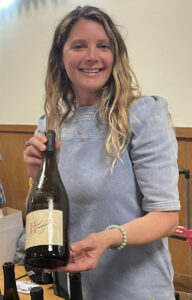
 the
the 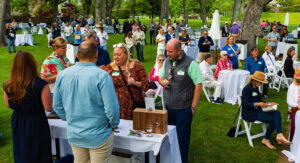 But wine is far more than a commodity or beverage, but as integral to modern civilization as music or literature or art. And in this regard, the Napa Valley Wine Library Collection serves as a preserve for wine’s many cultural artifacts, “an incomparable resource for research, appreciation, andd understanding of wine in all its ramifications.” As such, it was a pleasure to participate in this event and raffle, to help maintain this most important endeavor.
But wine is far more than a commodity or beverage, but as integral to modern civilization as music or literature or art. And in this regard, the Napa Valley Wine Library Collection serves as a preserve for wine’s many cultural artifacts, “an incomparable resource for research, appreciation, andd understanding of wine in all its ramifications.” As such, it was a pleasure to participate in this event and raffle, to help maintain this most important endeavor. 

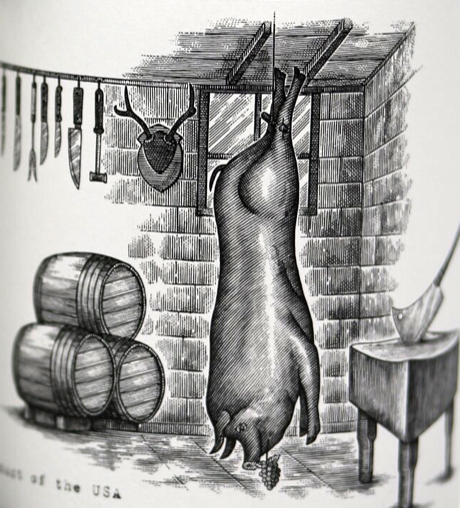
 Saint-Emilion lies to the south of Pomerol and is distinguished by wines that blend Merlot and Cabernet Franc. Principal protagonists here include
Saint-Emilion lies to the south of Pomerol and is distinguished by wines that blend Merlot and Cabernet Franc. Principal protagonists here include  This is not to say that I didn’t thoroughly enjoy Carlo Niboli’s second staging of
This is not to say that I didn’t thoroughly enjoy Carlo Niboli’s second staging of 
 Admittedly, Clarksburg will be on few people’s radar as a major wine region, but the newly-restored barn at Heringer easily qualifies as one of the most inviting tasting rooms I have ever visited. And in keeping with it reputation as the pinnacle of this AVA, our host winery shared with this event a 2018 Moscato (subsequently revealed to be Muscat Canelli) and a delightful 2018 Pinot Gris. But their forte at Wines of Clarksburg proved to be the spectacular 2015 Tempranillo, a wine ideally suited to the evening’s Andalusian breeze.
Admittedly, Clarksburg will be on few people’s radar as a major wine region, but the newly-restored barn at Heringer easily qualifies as one of the most inviting tasting rooms I have ever visited. And in keeping with it reputation as the pinnacle of this AVA, our host winery shared with this event a 2018 Moscato (subsequently revealed to be Muscat Canelli) and a delightful 2018 Pinot Gris. But their forte at Wines of Clarksburg proved to be the spectacular 2015 Tempranillo, a wine ideally suited to the evening’s Andalusian breeze. 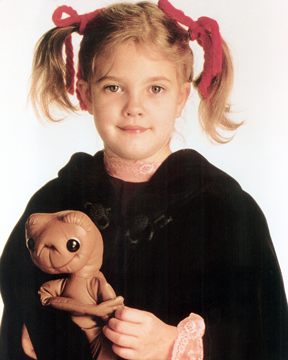 wines after her less-than-stellar vintages originating from Italy at the beginning of this decade. Now calling Monterey home, these wines included her 2017 Rosé Of Pinot Noir alongside Carmel Ridge’s 2015 East Bend Chardonnay and their 2014 First Row Pinot Noir. Another collaboration,
wines after her less-than-stellar vintages originating from Italy at the beginning of this decade. Now calling Monterey home, these wines included her 2017 Rosé Of Pinot Noir alongside Carmel Ridge’s 2015 East Bend Chardonnay and their 2014 First Row Pinot Noir. Another collaboration, 